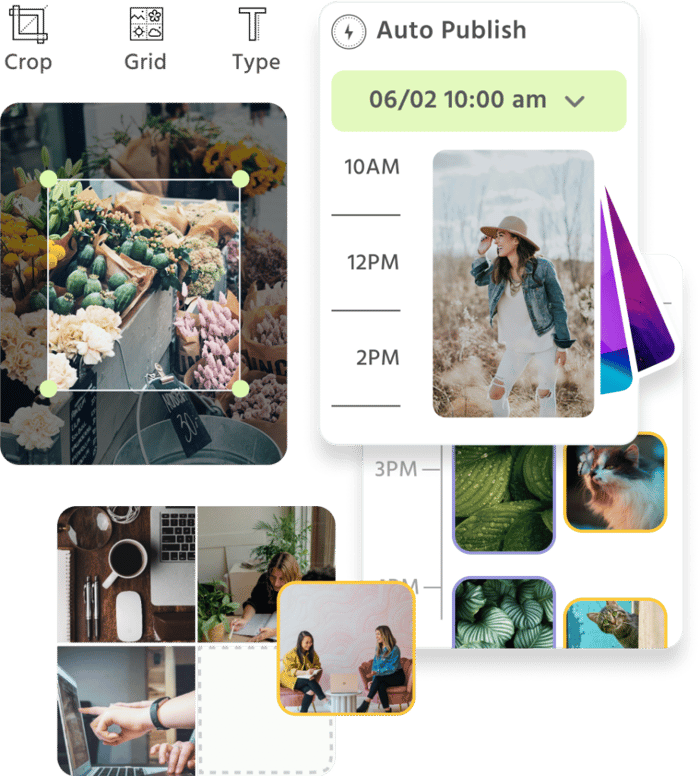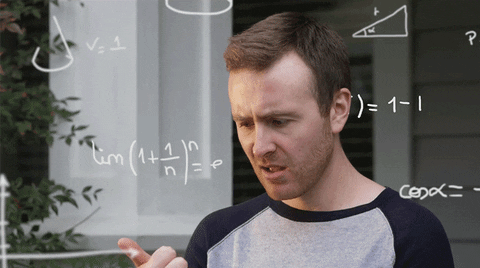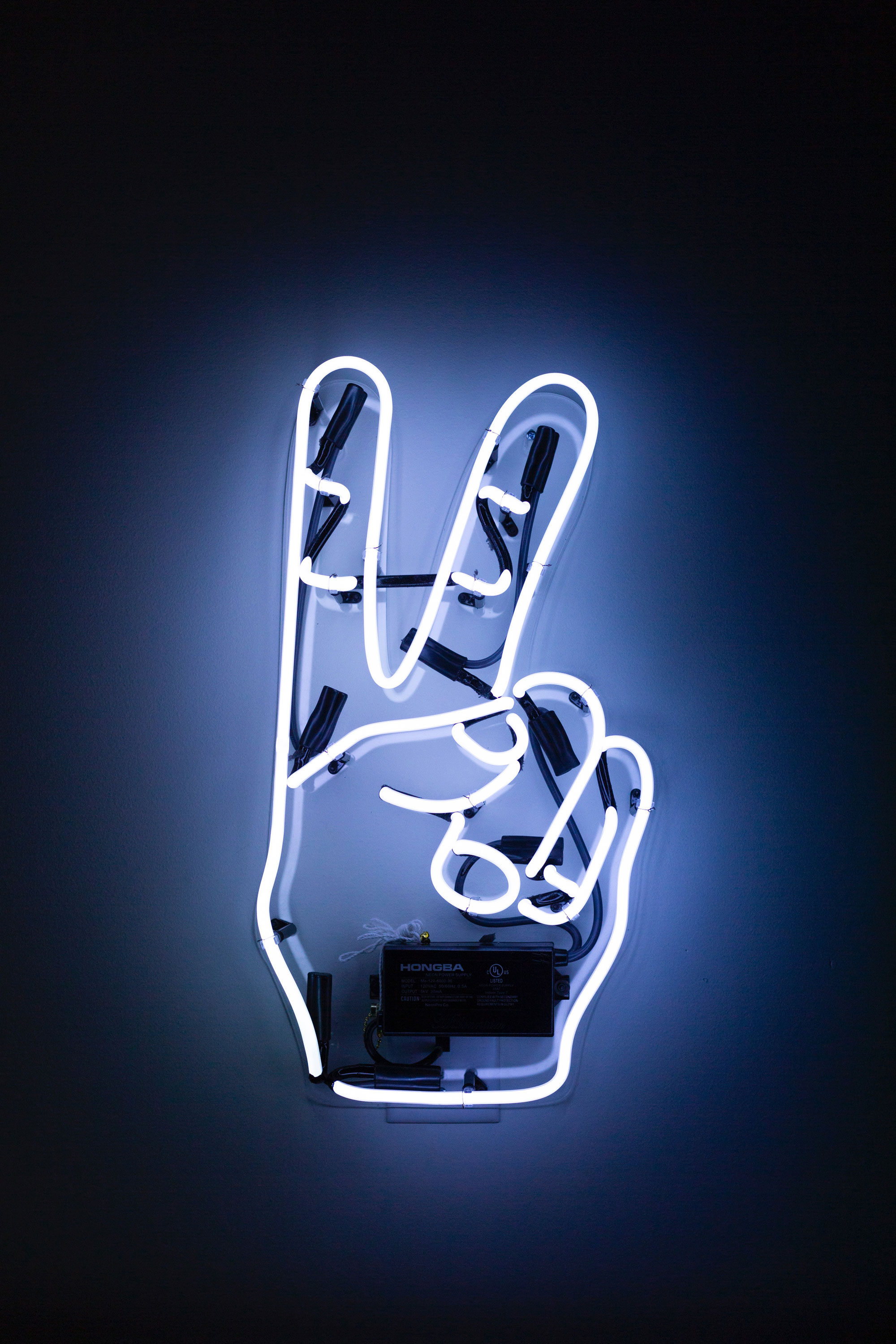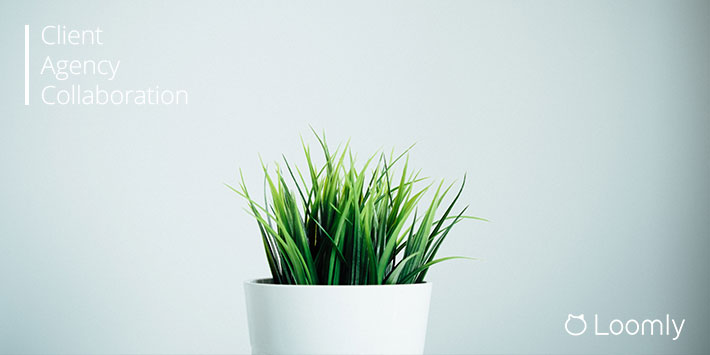Client-agency collaboration is a pillar of brand success.
There are few ventures more fruitful than getting the best minds from both parties into one room, and working on a creative project that will shape the future of a brand.
But:
To get the most out of this collaboration, everyone needs to know how to manage this relationship effectively, to:
- Communicate properly
- Set expectations
- Develop a trustworthy working partnership
In this article, we have outlined five potential problems (and their solutions), so you can better manage your client-agency relationships and build a rock-solid partnership.

Manage all your social media accounts in one place.
Craft, schedule, & auto-post content to all your social channels, then track analytics and manage interactions from a single, easy-to-use dashboard.
1. Get Clear On Who You Need To Collaborate With (And When)

There are people in both camps who need — and want — to be part of each stage of your client-agency collaboration.
Depending on your project this could be:
- Account managers
- Executives
- Marketing teams
- Creatives
- Human resources
- Legal
But not all of these team members need to be involved all the time.
If you are working to overhaul a company’s branding, then the CEO and COO are probably going to want to be in the room.
But, they are not going to be too concerned about what watermark you are going to use on your infographics.
Setting clear points of contact — and channels of communication — for each project can positively impact your collaboration by reducing bottlenecks and ensure you collaborate with the right people.
This saves resources on both sides.
Doing this can also help to improve creativity. Providing cross-functional teams the autonomy to work (and deliver results) alone, then report back later, can produce incredible results.
“Collaboration is a key part of the success of any organization, executed through a clearly defined vision and mission and based on transparency and constant communication.”
— Dinesh Paliwal
2. Set Clear Expectations Early In The Process

We always have expectations of our professional relationships.
They can be based on results, behavior, adherence to a system or even just sharing information. And, in a client-agency collaboration, we cannot afford to ignore them.
In many situations these expectations can be beneficial; they help to direct your work and creativity, based on an understanding of the needs of the other party.
But professional relationships break down when expectations are:
- Poorly communicated
- Mismanaged
It is not uncommon for people to assume the other party has understood their expectations. They seem like common sense, so it does not even need to be spoken about, right?
The problem: one party has an expectation, but the other is blissfully unaware it exists.
The end result?
Expectations are not met — or at the very least, it feels like they are being ignored — when no one knows they even existed in the first place:

This experience can be pretty damaging to relationships because everyone feels a little, well…sore afterward.
To manage this aspect of client-agency collaboration, it is important to:
- Set clear expectations early in the process
- Ensure they are realistic
- Revisit and revise them periodically
Which brings us squarely to item number three:
3. Communicate, Communicate, Communicate!

As you may have guessed from the last two sections, communication is key to successful client-agency collaboration.
When entering into a new — or assessing a current — collaborative relationship, there is research to suggest that clients and agencies both value similar criteria, like:
- Honesty
- Bonding
- Closeness
- Understanding and empathy
- Information exchange
- Joint working
- Conflict handling
- Social activities
Each of these elements is grounded in clear, consistent and candid communication with one another.
There are two aspects of this that are worth exploring:
- The first is having space to speak about the current project openly. Allowing people to share thoughts, ideas, opinions and new findings can improve creativity and collaboration.
- But it is also important to look at how ideas are communicated between clients and agencies:
- Are you using the right medium to get your message across effectively?
- Are you educating instead of lecturing?
As you probably heard a lot in your teens and early twenties; it is not what you say but how you say it.
You can improve and increase communication in a number of ways:
- Project management tools create lots of opportunity for communication.
- Creating effective workflows breed positive communication.
- Setting review milestones allow everyone to share thoughts, ideas, and progress periodically.
All of which can be supercharged by using honesty to build trust…
“The culture of a workplace — an organization’s values, norms, and practices — has a huge impact on our happiness and success.”
— Adam Grant
4. Honesty Is The Best Policy

Trust is a major underlying factor in agency-client collaboration.
In fact, 98% of agency owners and clients believe this to be true.
However, on whichever side we seat (agency-side or client-side), we may not always feel that people are honest with us.
In a study titled The Naked Truth from agency RCA and USA Today, researchers examined the problems with client-agency relationships.
In their research they found a consistent dissonance between what clients and agencies think:
88% of clients said they speak their mind freely to their agency, but only 36% of agencies believe this to be true.
This can lead to major problems with communication and satisfaction on both sides.
Even if a client is indeed truthful, but this is interpreted as a facade by the agency, it can be detrimental and potentially distort the message. (Like playing Telephone .)
Conversely, the level of honest expected also applies to agencies who should treat their clients the same way.
The solution: creating a culture where honesty is the standard, a safe space for honest communication, where communication is treated as honest unless informed otherwise.
5. Give As Much As You Receive

Reciprocity plays an integral part in agency-client collaboration.
At its core:
Reciprocity can simply be considered as keeping your end of the bargain and putting in as much time and effort as your agency or client counterpart.
For every action they take, there is an equal and opposite reaction you take.
Collaboration is rarely a one-sided endeavor: it requires people on both sides to put in the hard work needed to achieve the results you are working towards.
But you can also utilize different kinds of reciprocity to go above-and-beyond the call of duty.
By using:
- Surprise reciprocity: where you share an unsolicited gift or gesture. It could be in the form of a referral, gift or even a piece of information.
- Trumpeted reciprocity: where you share something that clearly shows you are going above and beyond, like early access to a company event.
You can delight people and bring added-value to the relationship that was not originally accounted for.
“The productivity of a work group seems to depend on how the group members see their own goals in relation to the goals of the organization.”
— Ken Blanchard
Wrapping this up
Client-agency collaboration is a key part of modern-day brand success. But, it is not always smooth sailing.
To effectively manage this relationship and reap the best rewards, it is important to:
- Set clear points of contact for specific projects
- Clearly define expectations
- Communicate openly and often
- Build a culture of honesty in all pursuits
- Give as much as you receive



